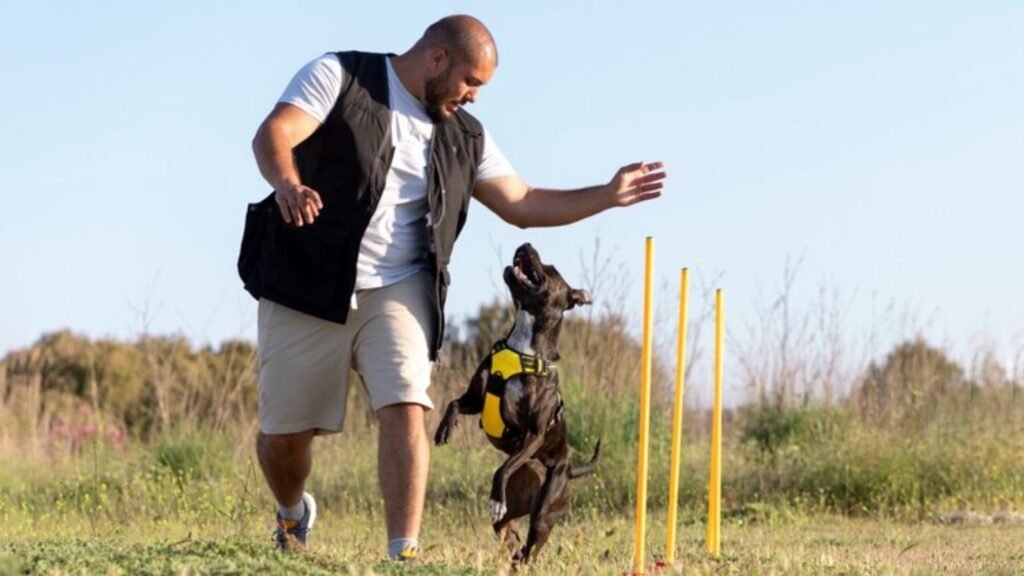
Have you ever found yourself wondering how to unlock the full potential of your furry friend? Dogs, like humans, thrive with the right guidance and training. But with the myriad of methods available, it can be bewildering to know where to begin. How do these diverse training techniques function, and which one is optimal for your pup? Let’s delve into the world of dog training in Santa Maria to find out.
Importance of Training Dogs
Training isn’t merely about teaching your dog tricks; it’s about nurturing a strong bond, ensuring safety, and fostering good behavior. A well-trained dog is not only happier and more confident but also easier to manage. Training also strengthens the communication between you and your canine companion, leading to a harmonious relationship built on trust and mutual understanding.
10 Different Dog Training Methods
- Positive Reinforcement
This method focuses on rewarding desired behaviors with treats, praise, or toys. By associating positive experiences with specific actions, dogs are motivated to repeat those behaviors.
- Clicker Training
Clicker training is one of the best dog training methods in Santa Maria which involves using a small handheld device that emits a distinct clicking sound. The click serves as a precise marker to indicate the exact moment a dog performs the desired behavior, making it easier for them to understand what they’re being rewarded for.
- Alpha Dog or Dominance
This method is based on the idea of establishing yourself as the “alpha” or pack leader in your relationship with your dog. It involves asserting dominance to control your dog’s behavior, often through techniques like alpha rolls or leash corrections.
- Model-Rival or Mirror Training
Dogs are highly social animals and can learn by observing other dogs. In mirror training, a trained dog demonstrates a desired behavior, and the untrained dog mimics it to receive a reward.
- Electronic Training
Electronic training tools such as shock collars or electronic fences are used to deliver aversive stimuli to discourage unwanted behavior. While effective in some cases, this dog training method in Santa Maria has raised ethical concerns and should be used with caution.
- Scientific Training
This method is grounded in principles of psychology and animal behavior science. It emphasizes understanding canine cognition and using evidence-based techniques to modify behavior.
- Relationship-Based Training
Building a strong relationship based on trust and respect forms the foundation of this method. By fostering a deep connection with your dog, you can effectively communicate your expectations and encourage desired behaviors.
- Mirror Training
Similar to model-rival training, mirror training involves using a mirror to help dogs learn new behaviors by observing themselves and receiving reinforcement for specific actions.
- Compulsion-Based Training
Also known as traditional or balanced training, this best dog training method in Santa Maria combines positive reinforcement for desired behaviors with mild corrections or punishments for unwanted behaviors.
- Lure-Reward Training
In lure-reward training, a lure such as a treat or toy is used to guide the dog into the desired position or behavior. Once the behavior is performed correctly, the dog is rewarded with the lure.
7 Ways to Choose the Best Training for Your Dog
- Understand Your Dog’s Personality
Consider your dog’s breed, age, temperament, and individual quirks when selecting a training method. Some dogs may respond better to certain techniques than others.
- Consult a Professional
Seek guidance from a certified dog trainer who can assess your dog’s needs and recommend the most suitable and best dog training approach in Santa Maria. A professional trainer can provide personalized guidance and support throughout the training process.
- Research Each Method
Take the time to research each training method, including its principles, techniques, and potential pros and cons. Understanding the underlying philosophy behind each approach will help you make an informed decision.
- Consider Your Own Abilities
Be honest about your own skill level and commitment to training. Some methods may require more time, patience, and consistency than others. Choose a method that aligns with your abilities and lifestyle.
- Prioritize Positive Reinforcement
Regardless of the method you choose, prioritize positive reinforcement to build a strong bond and motivate your dog. Positive reinforcement has been shown to be effective in promoting desired behaviors and strengthening the human-dog bond.
- Adapt as Needed
Every dog is unique, so be prepared to adapt your dog training approach in Santa Maria based on your dog’s responses and progress. What works for one dog may not work for another, so stay flexible and open to trying new techniques.
- Stay Patient and Consistent
Training takes time and patience. Be consistent with your methods and expectations, and celebrate small victories along the way. Remember that building a strong foundation of trust and communication is key to successful training.
In a Crux
Training your dog is an investment in their well-being and your relationship with them. By exploring different dog training methods in Santa Maria and choosing the one that best suits your dog’s needs and your own preferences, you can embark on a journey of learning, growth, and companionship. Whether you opt for positive reinforcement, clicker training, or another approach, remember that the key ingredients are love, patience, and understanding. Happy training!

